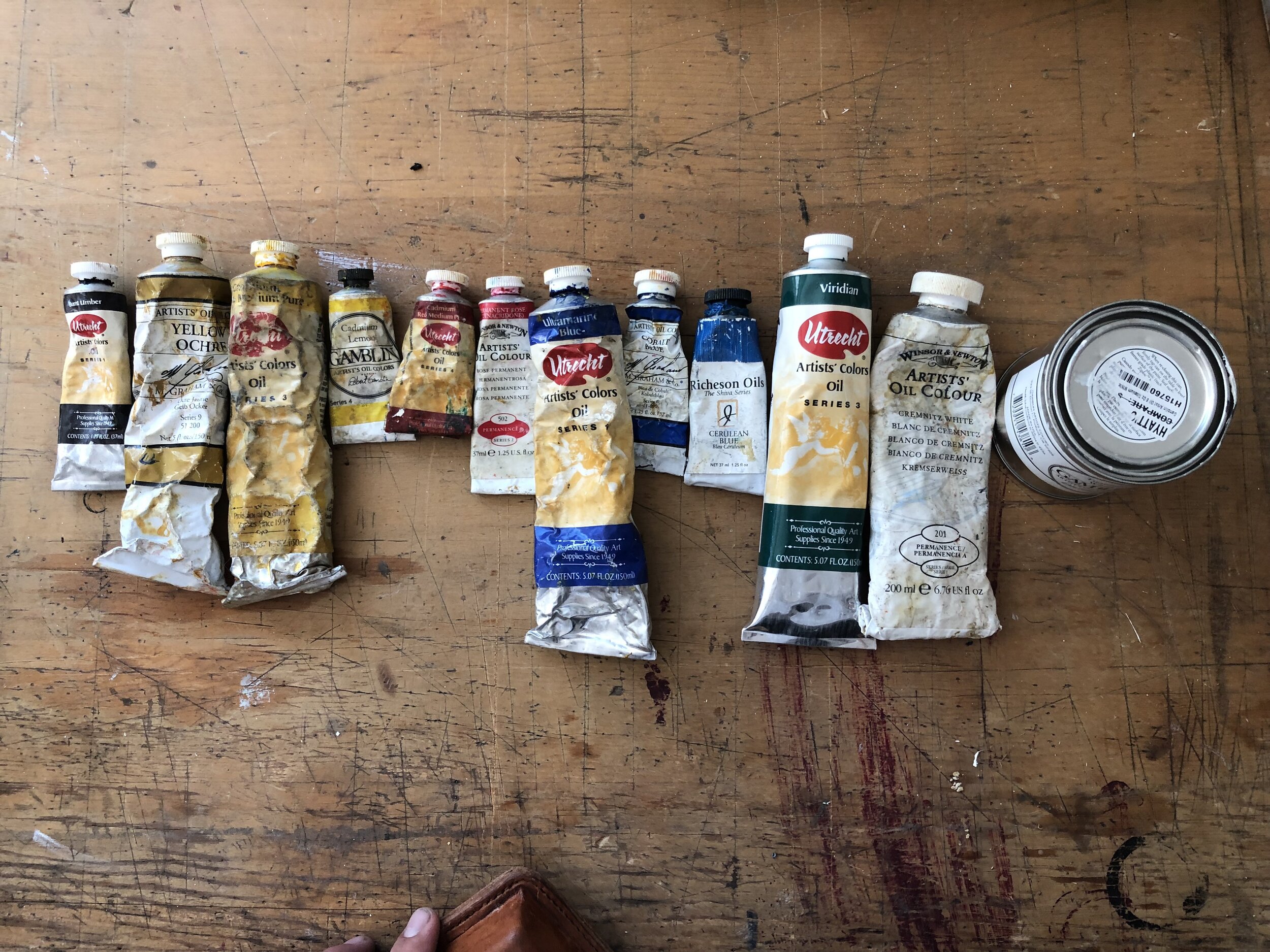Paint. It's the sticky stuff at the end of the brush that we as painters build pictures with. Essentially rocks/soil/ laboratory made compounds are ground up to a fine powder and then mixed with a binder (Drying oils, gum arabic, egg yolk, wax, casein, acrylic polymer, etc...) and boom, you've got paint. When you walk into the art store and see a bunch of different tubes of paint hanging on the racks looking so very seductive, stop yourself and examine what you are purchasing.
Now before getting into the weeds on this subject I think it is important to say that I am by no means swearing off student grade or other cheaper paints. They are all made for a reason and have their own specific purpose.
What do you want out of your paint?
Brilliance in color or higher chroma? Better coverage? Resilience to UV rays or light fastness? These are usually some of the characteristics of higher grade “artist quality” paints… but not always. It can all seem very confusing but it is actually quite simple.
Paint manufacturers usually offer at least two ranges of paint often called “student grade” and “artist quality.” Manufacturers offer these ranges to appeal to the full spectrum consumers who have different price points and intentions in mind. Generally “artist quality” paints include more single pigment and light fast pigments suspended in their medium with little to no “filler” or “binder.” However there are always exceptions and this is why we read the labels. Most reputable paint manufacturers are transparent about the pigments and binders they use within the tube and will be labeled like this picture below. There is no problem with multiple pigments being in your tube, but you should know which pigments they are. Handprint is great resource and should be used whenever curious about these pigments archival characteristics. One thing I see almost every time I pick up a tube of “Titanium White,” is that they are mixing in Zinc. Zinc is widely considered a horrendous pigment choice when picking a white because of is brittleness. I cannot tell you how many paintings I have seen on canvas by contemporary artists that have cracked because of this pigment. I am not really sure why paint makers add this in to their titanium, I suppose it lowers their price point. Gamblin and Rublev are some of the only major paint makers out their doing a single pigment titanium. I digress…
Holbein has this tube of Ultramarine Deep watercolor tube listed with its pigment name “PB29” on the side of the tube. It also has a three star rating for lightfast which means extremely permanent . It also has their series which is “A.” Paint manufacturers will categories their paints either “1, 2, 3, 4, etc…” or “A, B, C, D, etc….” This listing distinguishes price of tube. Low to High. There will also be a sign distinguishing transparency in this case a circle divided in two Semi-transparent. Refer to their website if not listed.
The main take away from this small post is to simply understand that not all pigments are suitable for the archival needs of artists and collectors. That one should know how to read a paint tube, and when confronted with a pigment like “PB29” know what resources to confer with i.e. Handprint to see just what that pigment actually is and what it’s archival properties are. I really do not see the point of using non-archival fading pigments. There is a vast array of colors that look the same and cost the same and do not fade.
I suppose some sketch book artists would say that this doesn’t really pertain to them but I was recently looking through Turner sketchbooks and saw that many of his watercolors had faded pretty significanlty, and that’s in a closed book with minimal UV damage.
At the end of the day, there are few short cuts in the game of representational picture making. Knowledge on materials from paints, to supports, brushes and mediums will help you excel much quicker then others. So read as much as you can, experiment as much as you can with as many different materials as you can so you have a baseline for your craft.
Large oil palette.
I hope some of this was helpful, and that it brings you some peace.


